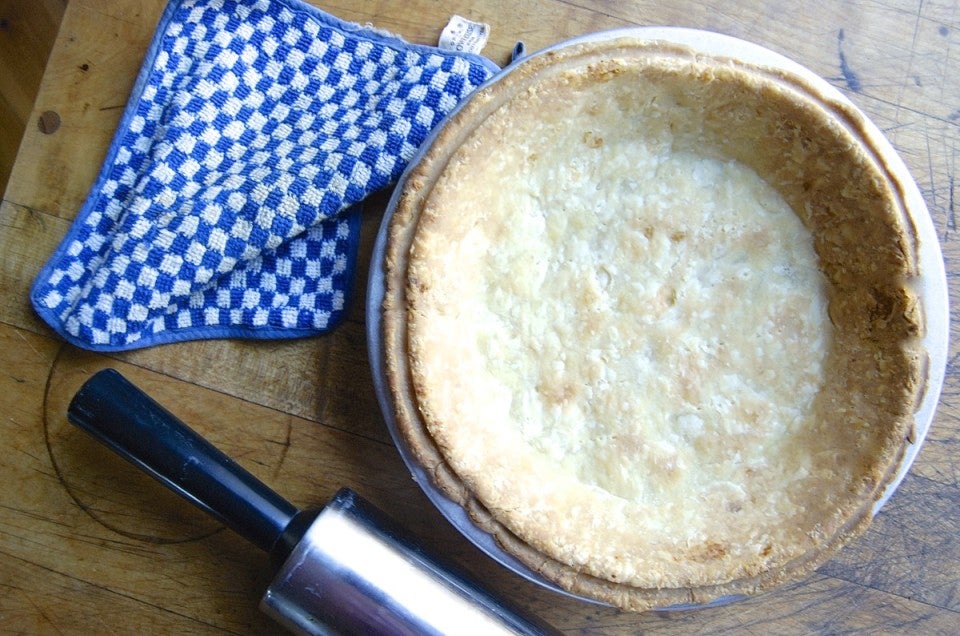


What does it mean to blind bake a pie crust?
Well, hearkening back to Merrie Olde England, where the term originated, blind baking a pie crust is simply pre-baking the crust, without filling, then adding the filling once the crust is baked.
The pie can then be placed back in the oven for the filling to bake; or the baked crust can be filled with cooked filling, the whole left to cool and set.
We also call this process "pre-baking," which is a term you can find this technique referred to across our blog, recipe site, and more.
Why is it necessary to pre-bake pie crust? Can't you just pour whatever filling you're using into the crust, and bake everything all at once?
Not always, and here's why. Some pies are filled with delicate fillings, ones that need a quick simmer on the stovetop at most. Baking this type of pie for the hour or so required to fully bake the crust would over-bake the filling.
Think Chocolate Cream Pie.
Blind baking a crust isn't quite as simple as it sounds. You don't just make the crust, pat it into the pie pan, and stick it in the oven. Because you know what happens?
A slumped mess.
(And why, pray tell, is there syrupy residue in the bottom of this crust? Well... to make a long story short, don't ask!)
OK, that's the baking fail. Now let's see how to blind bake a pie crust – successfully.
There are two simple ways to blind bake a pie crust.
This choice is perfect when you're making a tall and/or fancy crimped edge.
Like this.
The fat in this crust is more than half butter, so the crimp didn't hold up quite as well as that of an all-shortening crust.
What's up with that? Butter's melting point is lower than that of vegetable shortening, so a 100% butter crust will neither hold a crimp as well nor stand as tall in the pan as an all-shortening (or partial shortening) crust.
At any rate, you now have a baked crust, ready to fill.
Ah, Banana Cream Pie...
The second method used to blind bake pie crust is perfect for pies with a flat edge, one where you don't need the extra height – and aren't particularly worried about appearance.
This method is absolutely perfect for those of you who've struggled mightily with crusts that slump – particularly all-butter crusts.
Place the pan upside down on a baking sheet, so that the empty pan is on the bottom. Bake for 20 minutes in a preheated 375°F oven.
Gravity ensures that as your crust slips "down" the side of the pan, it's actually moving up!
Remove the crust from the oven. Use a spatula to carefully turn the pan over, so its crust side is up.
Prick the bottom of the crust all over with a fork.
Return the crust to the oven, and bake for an additional 15 to 20 minutes...
...until it's golden brown all over.
This method is ideal for pies where the edge of the pie plays second fiddle to its top – hello, Lemon Meringue!
Now, you may find recipes instructing you how to blind bake a pie crust that differ from this, especially in the oven temperature and baking time.
But however you choose to get there, your goal is a crisp, flaky, golden brown crust, ready for your choice of delicious fillings.
Like Easy Coconut Cream.
Want more? Find a wealth of pie tips, techniques, recipes, and inspiration in our Complete Guide to Pie Baking.
What's your favorite no-bake pie filling, perfect for a blind-baked crust? Please share in comments, below.













